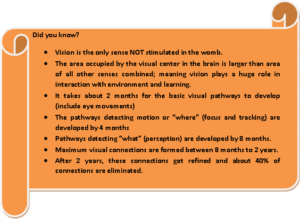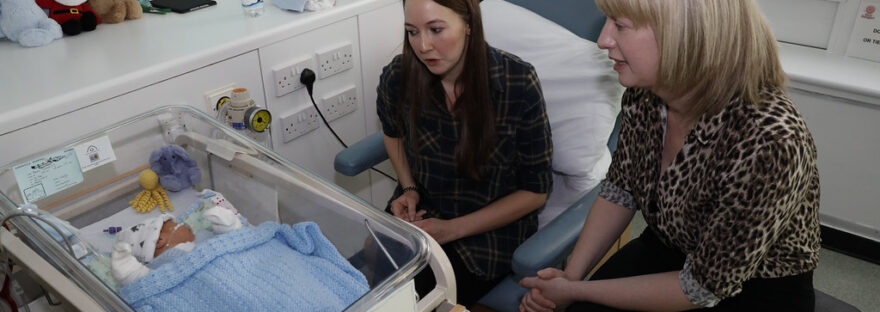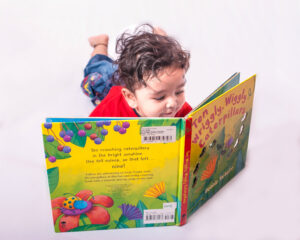TUMMY TIME: 3,2,1 BLAST-OFF!
Tummy time has become a hot word over the last few decades as a reaction to the “Back to Sleep” campaign started for SIDS prevention. In developmental terms though, tummy time is like the number “zero”- of highest significance but somehow not given its due. In this post, we are going to look at how tummy time is the foundation for a holistic development.
What is tummy time?
Tummy time means having the baby lying on their belly to play. On our support group a lot of new parents confuse the process with the end result. Tummy time is a position in which the process of strengthening is occurring and the end result of tummy time is the ability of the child to push up on their arms while holding the head freely.
By doing tummy time from early days, we are expecting this against gravity strengthening to trigger sensory processing, visual development, balance responses and upper back (shoulder) strengthening for reaching at 3-4 months. It also helps in maintaining head shape and preventing torticollis (twisted neck)
When should you start tummy time and for how long?
It is recommended that babies sleep on their backs but they can be put on their tummy for play with adult supervision. Doing this consistently, a few minutes a day, a few times a day will help the baby develop muscles in their neck, back and trunk.
Tummy time can be started as soon as the stump of the umbilical cord falls off. The typical rule of thumb is at least 5 minutes per month of life. So a one month old can be on their tummies for at least 5 minutes and a two month old would need at least 10 minutes. If you have started tummy time consistently from the first week or so of life, there are high chances of the infant not resisting tummy time and enjoying the position for longer duration.
Click Here for a video of a mother talking about her experience with tummy time for her two sons.
How should tummy time be done?
Ideally, tummy time is done on the floor on a firm mat. The hard surface gives the right feedback and allows baby to push against gravity with full force.
Clink Here for a video showing five easy ways of doing tummy time.
Click here for a handout you can print and put up to remind all family members to do tummy time with the baby whenever awake.
The first picture is my son at 4 weeks old, tummy time during massage before bath. We started tummy time on day 13, once the umbilical cord fell off. We barely managed a minute or two in the first month because of the long sleep cycles. After about 2 months, the duration was increased as per his needs. (Second picture at 2.5 months)


Why is tummy time so important?
Sensory: When the body is in prone, the body weight on shoulders, chest and arms is the first step to body awareness and mapping. The position also stimulates the calming center of the brain. Most of you must have experienced as mothers that holding the baby close with arms and legs curled up and rocking calms the babies down faster. Even as adults, when we get really upset, we tend to cross our arms or curl up in bed. On the back, gravity doesn’t allow for that fetal position.
Motor: Most of the movements babies develop in the first year are initiated from prone position. Also, strengthening of muscles in infants and toddlers occurs when there are repeated movements against gravity. For strong core and neck muscles (which provide support for posture and fine movements later on) the against-gravity position is on their tummy. A strong core is essential for any motor skill and coordination.
Vision: Tummy time helps with strengthening eye tracking muscles. It also helps with initiation of depth perception which is needed later for crawling, reaching, walking, stairs climbing, playground activities and academics.
Fingers: The ONLY time an infant gets to develop a basic strength in their palm + finger muscles is when they are trying to push themselves off the floor. All the other fine motor development like playing with toys in sitting, feeding with spoon, writing, craft skills are only developed well if there is basic strength in your fingers. Latest research is showing increased number of students with hand-writing problems.
Overall brain development: Tummy time leading to prone activities and movements are instrumental in developing coordination between the 2 halves of the brain. This connection is super essential for life skills. In social context when the skill of understanding body language when talking to someone or understanding sarcasm and other subtle language nuances stems from integration of both sides of your brain. Higher level functions like analysis of data, planning out chess strategies or musical aptitude are also part of bilateral integration. Not to forget all sporting activities and some daily activities when we multi-task!
Head shape and neck muscles: Getting pressure off the back of the head allows for good head shape to form. Also allows both side neck muscles to elongate proportionally preventing head shape defects. (Common terms are torticollis or plagiocephaly)
Muscle tone: Being on the back increases extensor tone leading to babies possibly arching their backs off the floor.
Other: Prone helps to relieve gas from the stomach.
Given the benefits of tummy time, I would definitely encourage parents to try as much as they can. Starting earlier does in fact help the baby like and enjoy the position but having parents engaged while doing it is a great bonding time for you as well.
Puja
22/1/2015
The website for more resources and handouts is www.pathways.org
























